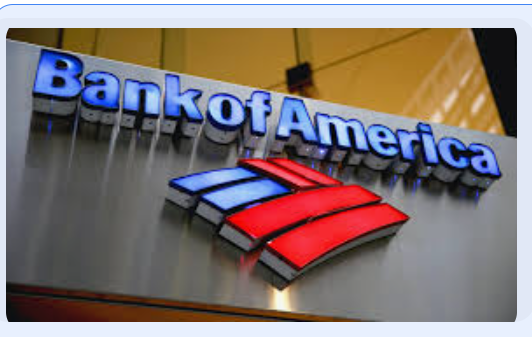Key takeaways
- Tighter policy and support for the new economic program has turned both locals and foreign investors more positive.
- Real sector notes a considerable slowdown in the economy while banks see dedollarization starting.
- Crowded positioning in TRY and inflation inertia are the major concerns. We see more positivism if data continues to improve.
Ms Zumrut Imamoglu, BofA, chief author of this desk note
Türkiye in Focus – 1Q pessimism out summer optimism in
Private sector now feels the slowdown in the economy and believe that the monetary stance is tight enough. Fiscal package is only a first and if effective, can push the budget deficit below 5% this year. CBRT accumulated more reserves than it lost since start of the year. Domestic speculative flows to FX reversed, foreign and domestic flows keep pressure off the currency despite the $49bn net position improvement since the local elections.
Feedback from our investor roadshow with 40+ accounts show that TRY and TurkGB exposure is widespread and minimal risk seen over the summer. Crowded positioning in TRY and inflation inertia are the major concerns.
Domestic demand finally slowing down
Real sector feedback on our trip suggested that domestic demand is slowing down and the tightness of the monetary policy is being more clearly felt. Some banks cannot fill the loan growth caps of 2% per month neither on consumer nor commercial side. 13 week moving average consumer loan growth hovers around 33% annualized as of May and total local currency loan growth decelerated from a high of 47% to 29%.
Commercial loan growth is down from 32% to 18%. However, FX loan growth accelerated as FX stability is allowing for more risk taking. In addition, card spending clearly exceeded quarterly inflation in 1Q and the momentum continues. Although macroprudential measures have been very effective on TRY loan growth, CBRT might bring new measures to curb FX loan growth and credit card spending if inflation inertia proves stronger than expected in the coming months. We think that slowdown in the economy will continue into the summer.
Speculative FX demand reversed, de-dollarization started
Since the local elections, domestic FX demand reversed and banks we spoke to in our trip said they were seeing retail and corporates on the selling side. Retail unwinding of KKMs accelerated and some corporates are borrowing in FX rather than TRY. Exchange rate stability is making TRY deposits more attractive now given that interest rates are 50% or above for 1-month deposits and higher than 60% for 3-month or longer tenors.
The de-dollarisation trend could continue during the summer if TRY stability continues. Given the high level of inflation, we expect some nominal depreciation to start again when capital inflows slow down. However, we continue to believe that the currency will beat the forwards at least until winter. We see USDTRY at 38 at year-end.
The CBRT net foreign asset position had worsened $30bn from start of the year until the local elections. Since then, it has accumulated $49bn back. The increase is a mix of local de-dollarisation, capital inflows as well as increase in gold reserves. We see c. $6bn net purchases in bonds and equities since the elections and c. $14bn potential increase in offshore swaps.
Strong capital inflows make it hard to control TRY liquidity
CBRT has changed its reserve building strategy, in our opinion, and is more concerned about keeping TRY liquidity conditions tight and strengthening the monetary transmission mechanism. To achieve this, the FX swaps with local banks have been reduced from a peak of $58.4bn at end of March to $25.4bn in May. We see that CBRT has not been opening as many auctions as in the past and therefore, closing the maturing swaps. However, reserve building due to strong capital inflows have pushed onshore TRY liquidity to excess levels again and we see TLRef below the upper band of 53% more often recently.
CBRT will likely continue to decrease its swaps with banks to reduce liquidity in the system. However, if capital inflows to TRY assets continue, it might have to strengthen its sterilization tools. Depo auctions help sterilize at the 50% policy rate rather than the lower band of 47%. The other option is to accumulate less reserves, but this could cause more appreciation in the currency causing pressure on the current account deficit or could cause a dollarisation trend again among locals. Although capital inflows into TRY assets are more than welcome after a long break, it certainly comes with its own challenges when it is intensified.
What are the risks?
We believe that the optimism we are witnessing both on the local side during our trip and among the foreign investors during our roadshow last week is here to stay at least over the summer. From our talks, we think that the biggest concern on both sides is inflation inertia. It is not yet clear whether the slowdown observed is enough to bring inflation near or below market expectations of 44%. We see inflation at 42% this year and CBRT has a forecast of 38%. We think that CBRT would not hesitate to act if it sees substantial deviation from their forecast path. This can be through further macroprudentials on credit cards and FX loans, or more hikes if needed.
The other concern we heard is on the positioning getting crowded. Given the still low ownership levels in TurkGBs, we don’t think this is a major concern. On TRY, indeed positioning is building but we don’t see a trigger to unwind as long as data continue to show further disinflation trend and correction in the current account balance.
Excerpt only, from the similarly titled BofA desk note
Follow our English language YouTube videos @ REAL TURKEY: https://www.youtube.com/channel/UCKpFJB4GFiNkhmpVZQ_d9Rg
And content at Twitter: @AtillaEng
Facebook: Real Turkey Channel: https://www.facebook.com/realturkeychannel/
